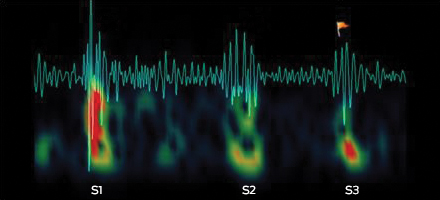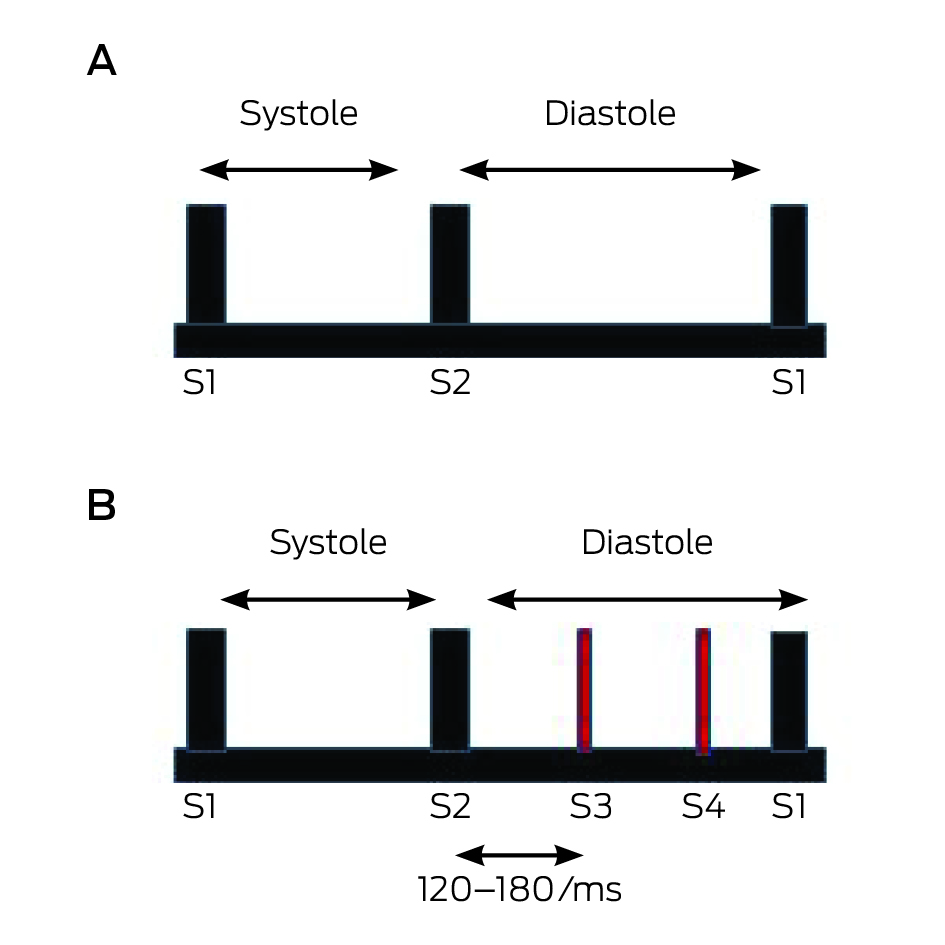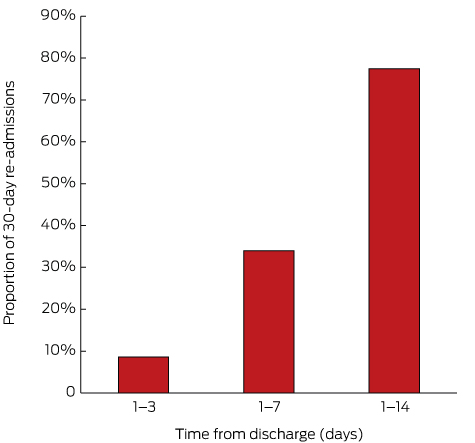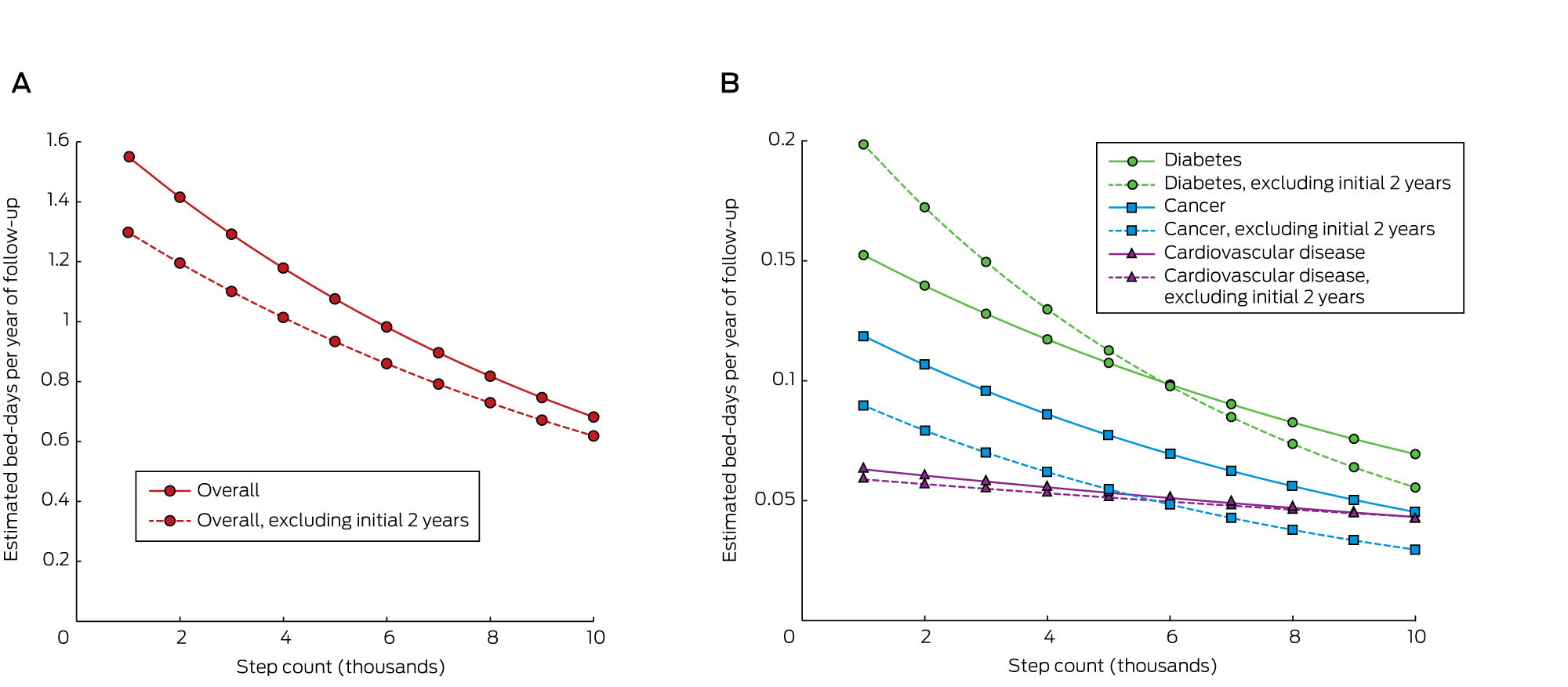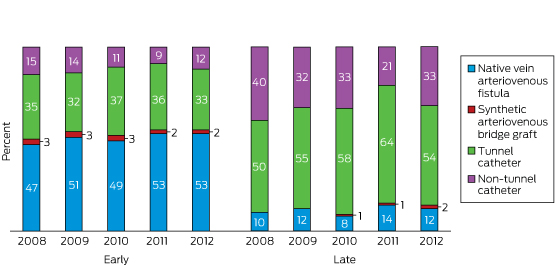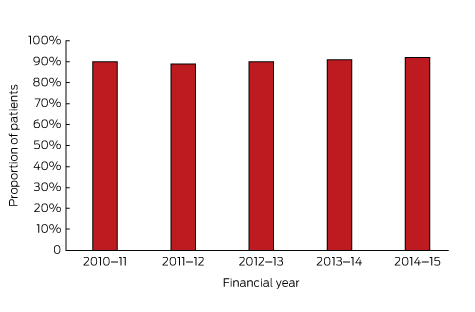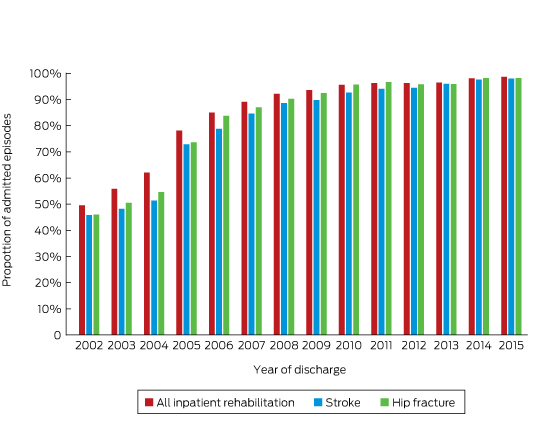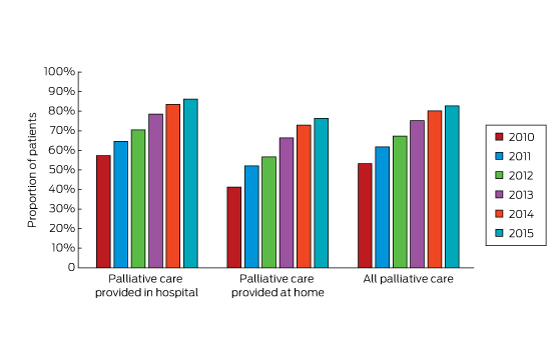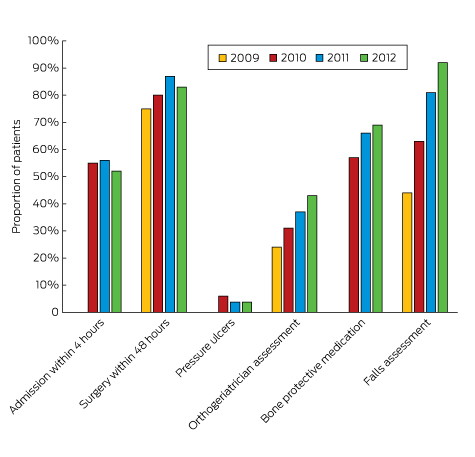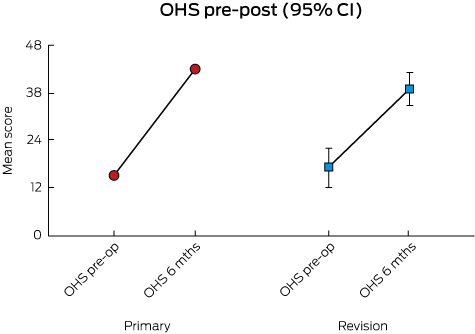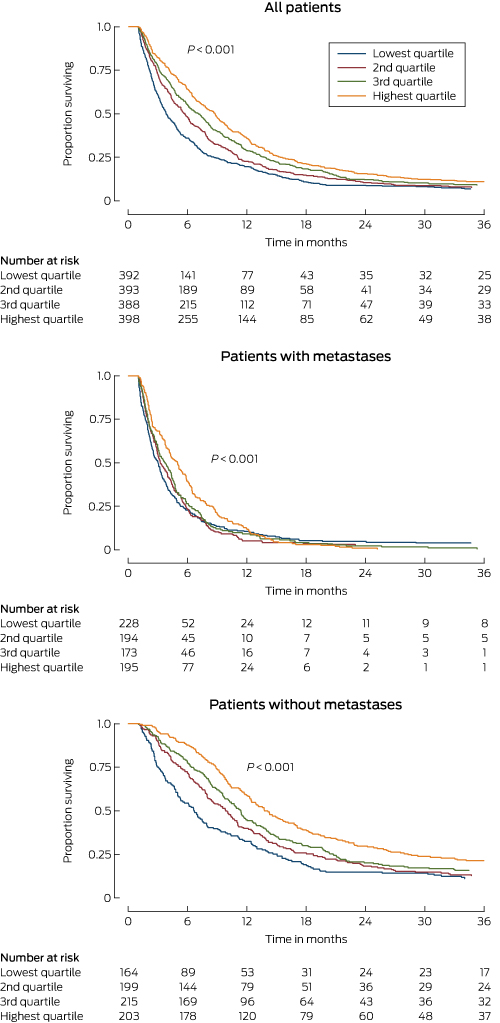The known The number of doctors who work beyond the age of 65 is growing. Studies of retirement intention have focused on single factors, such as health and income, and have generally been limited to single specialties.
The new 38% of doctors aged 55 or more were unsure about retiring or did not intend to retire. Both professional and broader psychosocial factors (including financial resources, work centrality, emotional resources, anxiety about ageing) influenced the intention to retire.
The implications Education programs facilitating retirement planning are needed for late career doctors, including advice on financial planning and developing non-professional interests.
In the absence of a mandatory retirement age in Australia, many doctors work beyond the age of 65.1 In 2014, 9.9% of the medical workforce were 65 or older, and the total number of doctors over 65 years of age has increased by 80% since 2004,1,2 consistent with an ageing society.
Older practitioners who prolong their careers are important for providing medical care as well as for teaching and mentoring younger colleagues.3 These benefits, however, must be weighed against a complex array of factors associated with ageing, including physical and cognitive changes that may hinder optimal practice.4
The challenges associated with retiring from a career in medicine were highlighted by the finding that only 61% of older Australian psychiatrists had commenced planning their retirement.5 Anticipated reasons for retirement reported in single specialty studies include deteriorating health and family or personal reasons;5 self-perception of one’s skill levels, rather than age;6 and financial aspects and the inability to find a suitable replacement.7
Whether the broader retirement literature is directly applicable to the medical profession is unclear.8 The largest reported effect sizes for factors favouring retirement planning have been for work involvement and job satisfaction. We similarly suggest that being a doctor is so closely linked with self-identity9 as to make retirement threatening. If so, it would be expected that work centrality — the extent to which work is of primary personal importance compared with other life roles; that is, an indicator of a person’s affective commitment to work10 — would be higher in doctors who are less inclined to retire. Further support for this hypothesis would be that doctors are less likely to retire if work is perceived as a calling (the work itself is fulfilling and perceived as contributing to the greater good), rather than a career (achievement is defined by advancement and promotion) or job (defined purely by financial success).11
Other psychological factors that may affect retirement planning include positive emotions, such as adaptability and optimism. Anxiety about ageing — the tendency to fear anticipated threats and losses associated with advancing age12 — may also be involved.
The factors that are weighed when considering retirement have not been explored in specific subgroups of doctors, such as international medical graduates (IMGs). Working in a rural or remote area may hinder retirement planning, given the lower replacement rates in such locations.
The aim of our survey was to determine the professional and personal factors associated with the intention to retire (ITR) among older medical practitioners. Significant correlations between retirement intention and subsequent retirement behaviour have been reported in the general literature on retirement.13
Methods
We undertook a cross-sectional self-report survey of doctors aged 55 or more, using a commercial database rented from the Australasian Medical Publishing Company (AMPCo). A pilot study (among doctors in the Australian Capital Territory and South Australia) verified the questionnaire items and data collection methodology. The main study was conducted in October 2015: 6000 doctors received an email from AMPCo (independently of the study authors) with an embedded link to the survey, twice within 2 weeks. Participants were offered the chance to win one of ten $50 gift vouchers. Data from the pilot study were not included in the data analysed in this article.
Questionnaire
The questionnaire (see online Appendix) included questions about demographic and professional details, such as country in which the primary medical degree was obtained, specialty, geographic location, and hours and type of practice. Representative items from the social resources and financial resources subscales of the Retirement Resources Inventory (RRI)14 were included. Health was measured on a 5-point self-rating scale of overall physical health, and also with the Self-Administered Comorbidity Questionnaire (SACQ),15 which asked whether the participant experienced, received treatment for, or was limited by any of 12 common medical problems.
Psychological variables were assessed with the K10, a validated screening instrument for measuring psychological distress.16 Items from the emotional resources subscale of the RRI that measure positive emotion, mastery, self-esteem, and self-perception of cognitive functioning14 were applied. The Anxiety about Ageing Scale17 was administered, including items reflecting each of four previously validated dimensions: fear of old people, psychological worries, concerns about physical appearance, and fear of losses.
A doctor’s self-identification with medical practice was assessed by two methods. The Work Centrality Questionnaire measures the primacy of work in a person’s life.18 Participants were also asked to state (on a 7-point Likert scale, ranging from “strongly agree” to “strongly disagree”) whether they viewed medical practice as a “job,” a “career”, or a “calling”.
Participants were asked to indicate whether they intended to retire (options: “I do not intend to retire”; “I do not know whether I will retire”; “I do intend to retire”). Those who intended to retire were asked to indicate a retirement age, and to rate the salience of factors that would determine its timing (on a Likert scale). Similarly, those who did not plan to retire or were unsure were asked about factors determining their decision. These factors were derived from previous research on older doctors, and from the general literature on retirement.19,20
Statistical analyses
As there was significant skew in the distribution of continuous variables (determined in one-sample Kolmogorov–Smirnov tests), descriptive statistics are reported as medians and interquartile ranges (IQRs). For categorical and dichotomous variables, numbers and percentages are reported. Skewed continuous data for dichotomous groupings were compared in Mann–Whitney U tests; χ2 tests and linear-by-linear association tests for ordinal variables were applied in univariate analyses of variables with respect to age, sex and ITR. Please note when interpreting results that it is possible for groups to have different rank sums that are statistically significant in non-parametric tests, but to also have identical or nearly identical medians.
Potential predictors with a significant relationship with ITR (univariate analysis, P < 0.2) were included in logistic regression models, with dichotomised ITR as the dependent variable. The first model included all participants, the second and third models assessed each age group separately (55–64 years, 65 years and over), and the fourth and fifth models each sex. A sixth model included medical specialties for which there were at least 50 respondents.
A two-block variable entry procedure was applied; block 1 included demographic factors (age, sex, location of practice, country of qualification), with forced entry. In block 2, forward conditional likelihood ratio entry was used for survey scores.
All analyses were conducted in SPSS 22 (IBM). P < 0.05 was deemed statistically significant.
Ethics approval
The study was approved by the Human Research Ethics Advisory Panel of the University of New South Wales (reference, 2014-7-68).
Results
Of the 6000 doctors invited to participate, 1049 responded; one participant was excluded because they had recently retired, leaving a final cohort of 1048 (response rate, 17.5%). The proportion of respondents by state and territory was similar to the proportion of registrants aged 55 and older located in the respective jurisdictions:1 37.1% from New South Wales, 26.2% from Victoria, 20.7% from Queensland, 11.6% from Western Australia, 2.6% from Tasmania, and 1.2% from Northern Territory; five respondents (0.5%) were from the ACT and SA.
The demographic characteristics of the participants are summarised in Box 1. The median age was 65 years (IQR, 59–69 years; range, 55–89 years). The medical specialties with at least 50 respondents were general practice (439 doctors, 41.9% of sample), internal medicine specialists (122, 11.6%), anaesthesia (72, 6.9%), surgery (71, 6.8%) and psychiatry (56, 5.3%). Compared with national data, the sample was similar with regard to the proportion of female doctors aged 55 or more and general practitioners aged 55 or more, but there were fewer IMGs.1
Six hundred and fifty respondents (62.0%) intended to retire; the others (combined as one group in further analyses) either had no intention of retiring (11.4%) or were unsure (26.6%). There were no differences in ITR according to age or sex (Box 2). There were, however, statistically significant differences between the five specialties with more than 50 respondents (P = 0.001): anaesthetists were the most likely to affirm an ITR (76%), followed by surgeons (69%), internal medicine specialists (67%), GPs (56%), and psychiatrists (50%).
Of the doctors who intended to retire, 33% did not nominate a specific retirement age. The anticipated retirement age for those who did increased progressively with age: for those aged 55–64 years, the median anticipated retirement age was 65 years (IQR, 65–68 years); for those aged 65–74, it was 71 years (IQR, 70–75 years); for those aged 75–84, it was 80 years (IQR, 78–83 years); and for those aged 85 or more, it was 86 years (IQR, 86–88 years). The median anticipated retirement age was 70 years (IQR, 65–73 years) for men and 68 years (IQR, 65–71 years) for women.
There were significant differences by age in the anticipated reasons for retirement. Those aged 55–64 years were more likely than older doctors to nominate achieving financial security, being able to access superannuation, a desire for more personal or leisure time, and a partner or spouse retiring. Further, the younger group was more likely to plan transition to retirement by reducing working hours. Women were more likely to nominate a partner retiring as an anticipated reason for retirement (Box 2).
Among doctors who did not intend to retire or were unsure about retirement, there were significant differences by age in the reasons for continuing to work. Doctors aged 65 or older were more likely to indicate that continuing to work was motivated by the wishes of their partner or family, the cognitive stimulation afforded by work, their maintaining a sense of purpose, or their good physical health. Men were more likely to nominate a partner’s or family’s wishes as a reason for continuing to work (Box 3).
Factors associated with intention to retire
For the entire sample of respondents, the odds of ITR were lower for IMGs, and for those with a higher work centrality score and greater emotional resources. The odds of ITR were higher for doctors with better financial resources and greater anxiety about ageing (Box 4, model 1). It is notable that factors such as location of practice, social resources, and objective health were not significant factors.
For doctors aged 55–64 years, the odds of ITR were higher for those with better financial and social resources, and lower for IMGs and for those with greater work centrality. For doctors aged 65 or more, the odds of ITR were higher for doctors with better financial resources and greater anxiety about ageing, and lower for those with greater work centrality and greater emotional resources (Box 4, models 2 and 3).
The factors significant for ITR in male doctors were the same as for the whole sample. For women, the odds of ITR were higher for doctors with better financial resources, and lower for those with greater work centrality score and greater emotional resources (Box 4, models 4 and 5).
When regression analysis was restricted to doctors from the five specialties with more than 50 respondents (Box 4, model 6), the odds of ITR were lower for doctors who were IMGs, psychiatrists, GPs, and for those who reported greater work centrality and greater emotional resources. The odds of ITR were also higher for doctors with better financial resources and greater anxiety about ageing (Box 4, model 6).
Discussion
This is the first study of the broader professional and psychosocial factors associated with retirement intention among doctors in different specialties. Planning retirement has benefits for the continuity of patient care and service provision, and is likely to assist the medical practitioner’s adjustment to retirement.21
Our sample of doctors were less likely to retire than people aged 45 and over in the general population: male doctors planned to retire 4 years later (at age 69.7 v 65.7 years) and female doctors 3.6 years later (age 68.1 v 64.5 years) than people in the general community, while fewer doctors reported an ITR (62% v 79%).19 Only two-thirds of doctors who intended to retire nominated a retirement age, and the anticipated age increased progressively with each successive 10-year age bracket.
There were a number of differences between age groups in the reasons for either anticipating retirement or continuing to work. The responses of doctors aged 65 or more who intended to continue to work suggested that this group was financially independent, enjoyed good physical health, and valued a sense of purpose in life more than leisure time.
Women were more likely than men to accompany a spouse into retirement, and a greater proportion of women nominated responsibilities as a carer as a reason for retiring (although the difference was not statistically significant), consistent with data for the general community.19,22 Men were more likely to continue working because of the wishes of a partner or family.
Two factors, work centrality and financial resources, consistently predicted ITR in all regression models. It is unclear whether the association of greater work centrality with reduced odds of retiring is related to the self-identity of people attracted to medicine and, if so, whether this effect is limited to the current sample or generally applies to doctors over 55. Alternatively, the nature of medical practice may lead to work becoming the pre-eminent feature of one’s life. That greater emotional resources and greater anxiety about ageing were also associated with reduced odds of retirement is another indication of the importance of personal characteristics in determining retirement intentions.
Financial security was the other consistent factor when considering retirement, in keeping with data for the general community.19 Retirement intentions were informed by the views of a broader community, not just the practitioner themselves; for one-third of doctors the wishes of partners and family were a key consideration in the decision to keep working.
The desire of IMGs to delay retirement is unsurprising, given their later entry into the medical workforce in Australia. Interpretation of ITR in different specialties was limited by the fact that only five provided sufficient responses for statistical analysis. The odds of GPs and psychiatrists intending to retire were the lowest of the five specialties; this may reflect the respective salience for these two groups of financial rewards and physical demands in decision making about retiring. Although being a surgeon or anaesthetist were not significant factors in regression model 6, the proportions of respondents in these two specialties who planned to retire was greater than in the other three; this was perhaps related to the systemic approaches to ageing and retirement undertaken by their respective colleges.23
There are limitations to our study. These include the modest response rate to our survey of 17.5%. Although comparable with similar surveys,24 the low rate limits our ability to generalise our findings about subgroups of doctors. In addition, there are potential sources of bias, such as sample skewing toward doctors who were already contemplating retirement, the lack of demographic data on respondents apart from age, sex, and the proportion of practitioners in a specialty compared with their overall state/territory proportion, the under-representation of IMGs, and the electronic format of the survey. Although our sample was not fully national, its demographic data were comparable with national data on the proportions of women, GPs, and the states of practice. Finally, the cross-sectional nature of the survey did not allow retirement intention to be analysed as a dynamic process, although significant correlations between retirement intention and behaviour over 5 years have been reported.13
Our findings are relevant to developing education and support programs for assisting late career medical practitioners to transition to retirement. Retirement is potentially an emotional question for many doctors; learning about their colleagues’ experiences may be helpful. Such programs should include general advice (including about financial and emotional resources), recognise work as part of self-identity, and target specific groups, such as IMGs and GPs. Programs should be provided within continuing professional development programs, and receive funding from the medical colleges.
Box 1 –
Demographic characteristics of the 1048 respondents to the survey on intention to retire
|
|
Total |
55–64 years old |
65 years old or more |
P |
Men |
Women |
P |
||||||||
|
|
|||||||||||||||
|
Number of doctors |
1048 |
520 (49.6%) |
528 (50.4%) |
|
807 (77.0%) |
241 (23.0%) |
|
||||||||
|
Married (de jure/de facto) |
921 (87.9%) |
458 (88.1%) |
463 (87.7%) |
0.85 |
745 (92.3%) |
176 (73.0%) |
< 0.001 |
||||||||
|
Work less than 40 h/week |
558 (53.2%) |
206 (39.6%) |
352 (66.7%) |
< 0.001 |
403 (49.9%) |
155 (64.3%) |
< 0.001 |
||||||||
|
International medical graduate |
205 (19.6%) |
75 (14.4%) |
130 (24.6%) |
< 0.001 |
157 (19.5%) |
48 (19.9%) |
0.87 |
||||||||
|
Live in a capital city |
646 (61.6%) |
317 (61.0%) |
329 (62.3%) |
0.77 |
491 (60.8%) |
155 (64.3%) |
0.33 |
||||||||
|
Solo practitioner* |
197 (19.9%) |
74 (14.8%) |
123 (25.0%) |
< 0.001 |
154 (20.1%) |
43 (18.9%) |
0.69 |
||||||||
|
Self-rated health |
|
|
|
|
|
|
|
||||||||
|
Excellent/very good |
718 (68.5%) |
355 (68.3%) |
363 (68.8%) |
0.87 |
546 (67.7%) |
172 (71.4%) |
0.28 |
||||||||
|
Poor to good |
330 (31.5%) |
165 (31.7%) |
165 (31.3%) |
|
261 (32.3%) |
69 (28.6%) |
|
||||||||
|
SACQ score, median (IQR) |
2.0 (0.0–4.0) |
2.0 (0.0–3.0) |
2.0 (1.0–4.0) |
< 0.001 |
2.0 (0.0–4.0) |
2.0 (0.0–3.0) |
0.031 |
||||||||
|
K10 score, median (IQR) |
12.0 (11.0–15.0) |
13.0 (11.0–15.0) |
12.0 (11.0–14.0) |
< 0.001 |
12.0 (11.0–15.0) |
12.0 (11.0–15.0) |
0.68 |
||||||||
|
Perception of work |
|
|
|
|
|
|
|
||||||||
|
Job |
59 (5.6%) |
37 (7.1%) |
22 (4.2%) |
0.11 |
49 (6.1%) |
10 (4.1%) |
0.013 |
||||||||
|
Career |
423 (40.4%) |
203 (39.0%) |
220 (41.7%) |
|
342 (42.4%) |
81 (33.6%) |
|
||||||||
|
Calling |
566 (54.0%) |
280 (53.8%) |
286 (54.2%) |
|
416 (51.5%) |
150 (62.2%) |
|
||||||||
|
Work centrality score, median (IQR) |
23.0 (21.0–25.0) |
23.0 (20.0–25.0) |
23.0 (21.0–25.0) |
0.001 |
23.0 (21.0–25.0) |
23.0 (20.0–25.0) |
0.16 |
||||||||
|
Anxiety about ageing score, median (IQR) |
29.0 (26.0–32.0) |
29.0 (25.0–32.0) |
29.0 (26.0–32.0) |
0.24 |
29.0 (26.0–32.0) |
30.0 (25.0–32.0) |
0.48 |
||||||||
|
|
|||||||||||||||
|
SACQ = Self-Administered Comorbidity Questionnaire. * Excludes 56 practitioners not engaged in patient care. |
|||||||||||||||
Box 2 –
Factors determining the timing of retirement among 650 doctors who intend to retire
|
|
Total |
55–64 years old |
65 years old or more |
P |
Men |
Women |
P |
||||||||
|
|
|||||||||||||||
|
Intend to retire (proportion of 1048 respondents) |
650 (62.0%) |
335 (64.4%) |
315 (59.7%) |
0.11 |
497 (61.6%) |
153 (63.5%) |
0.59 |
||||||||
|
Intend to transition to retirement |
540 (83.1%) |
296 (88.4%) |
244 (77.5%) |
< 0.001 |
416 (83.7%) |
124 (81.0%) |
0.44 |
||||||||
|
Factors affecting timing of retirement* |
|
|
|
|
|
|
|
||||||||
|
Financial security |
371 (57.1%) |
220 (65.7%) |
151 (47.9%) |
< 0.001 |
294 (59.2%) |
77 (50.3%) |
0.054 |
||||||||
|
Physical illness/disability |
364 (56.0%) |
190 (56.7%) |
174 (55.2%) |
0.70 |
275 (55.3%) |
89 (58.2%) |
0.54 |
||||||||
|
Cognitive impairment |
354 (54.5%) |
177 (52.8%) |
177 (56.2%) |
0.39 |
272 (54.7%) |
82 (53.6%) |
0.81 |
||||||||
|
Work-related burnout |
255 (39.2%) |
141 (42.1%) |
114 (36.2%) |
0.12 |
192 (38.6%) |
63 (41.2%) |
0.57 |
||||||||
|
Act as carer |
178 (27.4%) |
92 (27.5%) |
86 (27.3%) |
0.96 |
127 (25.6%) |
51 (33.3%) |
0.06 |
||||||||
|
Desire more personal/leisure time |
438 (67.4%) |
243 (72.5%) |
195 (61.9%) |
0.004 |
336 (67.6%) |
102 (66.7%) |
0.83 |
||||||||
|
Ability to access superannuation |
225 (34.6%) |
134 (40.0%) |
91 (28.9%) |
0.003 |
178 (35.8%) |
47 (30.7%) |
0.25 |
||||||||
|
Spouse/partner retiring |
139 (21.4%) |
94 (28.1%) |
45 (14.3%) |
< 0.001 |
97 (19.5%) |
42 (27.5%) |
0.036 |
||||||||
|
|
|||||||||||||||
|
* Responses for each factor were dichotomised into “strongly agree”/“agree” v other responses. |
|||||||||||||||
Box 3 –
Factors determining decision to continue working for 398 doctors not intending to, or unsure about, retirement
|
|
Total |
55–64 years old |
65 years old or more |
P |
Men |
Women |
P |
||||||||
|
|
|||||||||||||||
|
Do not intend to retire, or unsure (proportion of entire sample) |
398 (38.0%) |
185 (35.6%) |
213 (40.3%) |
0.11 |
310 (38.4%) |
88 (36.5%) |
0.59 |
||||||||
|
Factors affecting timing of retirement* |
|
|
|
|
|
|
|
||||||||
|
Relationship with patients |
232 (58.3%) |
101 (54.6%) |
131 (61.5%) |
0.16 |
179 (57.7%) |
53 (60.2%) |
0.68 |
||||||||
|
Cognitive stimulation |
349 (87.7%) |
154 (83.2%) |
195 (91.5%) |
0.012 |
273 (88.1%) |
76 (86.4%) |
0.67 |
||||||||
|
Finances |
229 (57.5%) |
115 (62.2%) |
114 (53.5%) |
0.08 |
174 (56.1%) |
55 (62.5%) |
0.29 |
||||||||
|
Fulfilling professional relationships |
254 (63.8%) |
114 (61.6%) |
140 (65.7%) |
0.40 |
196 (63.2%) |
58 (65.9%) |
0.64 |
||||||||
|
Good physical health |
312 (78.4%) |
134 (72.4%) |
178 (83.6%) |
0.007 |
239 (77.1%) |
73 (83.0%) |
0.24 |
||||||||
|
Family’s/partner’s wishes |
136 (34.2%) |
49 (26.5%) |
87 (40.8%) |
0.003 |
118 (38.1%) |
18 (20.5%) |
0.002 |
||||||||
|
Sense of purpose/goals |
322 (80.9%) |
140 (75.7%) |
182 (85.4%) |
0.013 |
248 (80.0%) |
74 (84.1%) |
0.39 |
||||||||
|
|
|||||||||||||||
|
*Responses for each factor were dichotomised into “strongly agree”/“agree” v other responses. |
|||||||||||||||
Box 4 –
Logistic regression analyses of factors significantly influencing the intention to retire by 1048 medical practitioners in Australia
|
|
Intend to retire |
No intention/don’t know |
Adjusted odds ratio (95% CI) |
P |
|||||||||||
|
|
|||||||||||||||
|
Model 1: Whole sampleP < 0.001; variance accounted, 9.5% |
n = 650 |
n = 398 |
|
|
|||||||||||
|
International medical graduate |
99 (15.2%) |
106 (26.6%) |
0.61 (0.44–0.85) |
0.004 |
|||||||||||
|
RRI score: cognitive, emotional and motivational resources, median (IQR) |
47 (44–50) |
48 (45–51) |
0.96 (0.93–0.98) |
0.001 |
|||||||||||
|
RRI score: financial resources, median (IQR) |
7 (6–8) |
7 (6–8) |
1.31 (1.18–1.44) |
< 0.001 |
|||||||||||
|
Work centrality, median (IQR) |
22 (20–24) |
24 (22–26) |
0.89 (0.85–0.92) |
< 0.001 |
|||||||||||
|
Anxiety about ageing, median (IQR) |
30 (26–32) |
28 (25–32) |
1.05 (1.02–1.09) |
< 0.001 |
|||||||||||
|
Model 2: 55–64 years oldP < 0.001; variance accounted, 10.1% |
n = 335 |
n = 185 |
|
|
|||||||||||
|
International medical graduate |
33 (9.9%) |
42 (22.7%) |
0.47 (0.28–0.80) |
0.005 |
|||||||||||
|
RRI score: social, median (IQR) |
15 (13–17) |
15 (12–17) |
1.07 (1.01–1.14) |
0.017 |
|||||||||||
|
RRI score: financial resources, median (IQR) |
7 (6–8) |
7 (6–8) |
1.38 (1.18–1.60) |
< 0.001 |
|||||||||||
|
Work centrality, median (IQR) |
22 (20–24) |
23 (21–25) |
0.89 (0.83–0.94) |
< 0.001 |
|||||||||||
|
Model 3: 65 years or olderP < 0.001; variance accounted, 10.2% |
n = 315 |
n = 213 |
|
|
|||||||||||
|
RRI score: cognitive, emotional and motivational resources, median (IQR) |
46 (43–49) |
48 (45–50) |
0.94 (0.91–0.98) |
0.001 |
|||||||||||
|
RRI score: financial resources, median (IQR) |
7 (6–8) |
7 (6–8) |
1.22 (1.06–1.39) |
0.004 |
|||||||||||
|
Work centrality, median (IQR) |
23 (20–25) |
24 (22–26) |
0.87 (0.82–0.93) |
< 0.001 |
|||||||||||
|
Anxiety about ageing, median (IQR) |
30 (27–32) |
29 (25–32) |
1.06 (1.02–1.11) |
0.004 |
|||||||||||
|
Model 4: MenP < 0.001; variance accounted, 8.8% |
n = 497 |
n = 310 |
|
|
|||||||||||
|
International medical graduate |
75 (15.1%) |
82 (26.5%) |
0.59 (0.41–0.86) |
0.006 |
|||||||||||
|
RRI score: cognitive, emotional and motivational resources, median (IQR) |
47 (44–50) |
48 (45–50) |
0.97 (0.94–0.995) |
0.021 |
|||||||||||
|
RRI score: financial resources, median (IQR) |
7 (6–8) |
7 (6–8) |
1.26 (1.13–1.41) |
< 0.001 |
|||||||||||
|
Work centrality, median (IQR) |
22 (20–24) |
24 (22–26) |
0.89 (0.85–0.94) |
< 0.001 |
|||||||||||
|
Anxiety about ageing, median (IQR) |
30 (26–32) |
28 (25–31) |
1.06 (1.02–1.10) |
0.001 |
|||||||||||
|
Model 5: WomenP < 0.001; variance accounted, 13.8% |
n = 153 |
n = 88 |
|
|
|||||||||||
|
RRI score: cognitive, emotional and motivational resources, median (IQR) |
46 (44–49) |
48 (45–51) |
0.92 (0.86–0.98) |
0.014 |
|||||||||||
|
RRI score: financial resources, median (IQR) |
7 (6–8) |
6 (5–8) |
1.48 (1.18–1.85) |
0.001 |
|||||||||||
|
Work centrality, median (IQR) |
22 (20–24) |
24 (21–26) |
0.87 (0.79–0.96) |
0.004 |
|||||||||||
|
Model 6: Medical specialties with more than 50 responsesP < 0.001; variance accounted, 12.9% |
n = 462 |
n = 298 |
|
|
|||||||||||
|
International medical graduate |
74 (16.0%) |
84 (28.2%) |
0.67 (0.45–0.99) |
0.044 |
|||||||||||
|
General practitioner |
248 (53.7%) |
191 (64.1%) |
0.54 (0.34–0.87) |
0.012 |
|||||||||||
|
Psychiatrist |
28 (6.1%) |
28 (9.4%) |
0.40 (0.20–0.79) |
0.009 |
|||||||||||
|
RRI score: cognitive, emotional and motivational resources, median (IQR) |
47 (44–50) |
48 (45–50) |
0.95 (0.92–0.98) |
0.001 |
|||||||||||
|
RRI score: financial resources, median (IQR) |
7 (6–8) |
7 (6–8) |
1.31 (1.17–1.48) |
< 0.001 |
|||||||||||
|
Work centrality, median (IQR) |
22 (20–25) |
24 (22–26) |
0.87 (0.82–0.92) |
< 0.001 |
|||||||||||
|
Anxiety about ageing, median (IQR) |
30 (27–32) |
29 (25–32) |
1.07 (1.03–1.11) |
< 0.001 |
|||||||||||
|
|
|||||||||||||||
|
RRI = Retirement Resources Inventory. For all models, demographic variables were entered in a first block (eg, age groups, sex, international medical graduate, location of practice, specialty), before questionnaire data were entered in a second block (eg, RRI subscale, Self-Administered Comorbidity Questionnaire, work centrality, and Anxiety About Ageing scores). Note that it is possible for groups to have different rank sums that are statistically significant in non-parametric tests, but identical or nearly identical medians. |
|||||||||||||||

 more_vert
more_vert